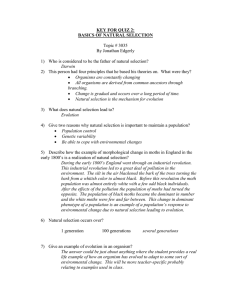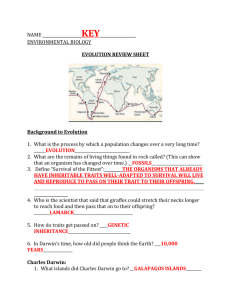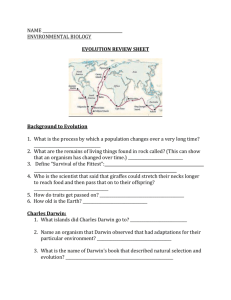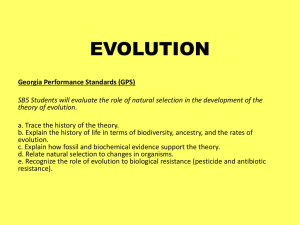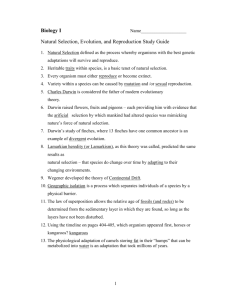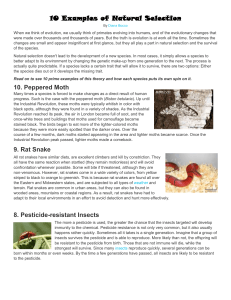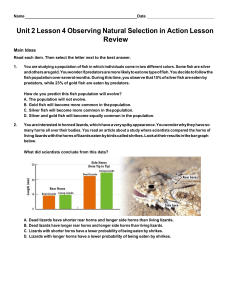HOW it proves evolution
advertisement
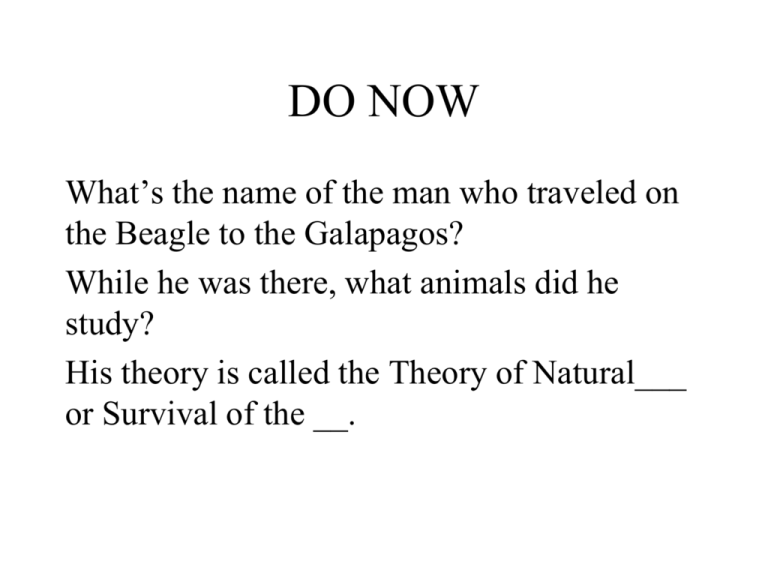
DO NOW What’s the name of the man who traveled on the Beagle to the Galapagos? While he was there, what animals did he study? His theory is called the Theory of Natural___ or Survival of the __. The Peppered Moths Industrial Revolution Clean buildings light dark 1 2 3 4 5 6 7 8 9 10 11 12 13 14 15 16 17 18 19 20 21 22 23 24 25 • Before Industrial Revolution: dark moths = light moths • Industrial Revolution: machines produced soot which stuck to buildings • After Industrial Revolution: light moths were eaten • Then the buildings were cleaned up. • After clean up: dark moths were eaten. Evolution – change of species over time. Evidence of Evolution: Definition: HOW it proves evolution: Fossils Remain or imprint of once living organisms Shows how species have changed (ex: horses) Homologous Structures Body parts in related animals are similar Prove that the animals must have a common ancestor Vestigial Structures Structures present in modern day organisms that have no function (ex: appendix, whale hip bone) Shows that species have changed because our ancestors must have used the structures Molecular Biology The more closely related 2 2 species with similar DNA species are to each other, must have a common the more similar their DNA ancestor is. Fetal Similarities The unborn offspring of many species resemble each other There must have been a common ancestor. 1831- Charles Darwin took the British naval ship called The HMS Beagle which sailed to the Galapagos Islands. He studied: • Finches, tortoises – noticed that each island had organisms with slightly different adaptations. Were they once related? How did they change? • Fossils – noticed that modern day organisms are different from their ancestors. How did they change? • He talked to farmers about selective breeding and understood inheritance. Darwin’s Conclusions • On the Origin of Species by Natural Selection • Survival of the Fittest = Natural Selection 4 part theory about how species change: 1. 2. 3. 4. Overproduction Inherited Variation (mutations) Struggle to Survive Successful Reproduction – pass on traits • Generation Time - the period between the birth of one generation and the birth of the next one. • Species with short generation times adapt quickly. • Species - a group of organisms that can mate with one other to produce fertile offspring. Speciation- the formation of a new species as a result of natural selection. 3 steps: 1. Separation – portion of the population becomes isolated 2. Adaptation – the part of the population that got separated has a different environment. Different traits will be “selected” by the environment. 3. Division – The 2 groups become so different that they can no longer interbreed. Speciation of Squirrels • The Kaibab squirrel (left) became isolated in the Grand Canyon approx. 10,000 years ago. Features have gradually evolved that separate it from close relative, the Abert squirrel (right) . Croatian Lizards • Experiment: Scientists placed 5 pairs of insectivorous species in a new island habitat. • Old island habitat very little plants but plenty of insects – (Lizards diet was 93% insects, 7% plants) • New island habitat had an abundance of plants, but limited insects. • After 80 generations, the lizards diet was 36% insect & 64% plant In a few decades the lizards have developed: • New digestive structure • Larger heads • Harder bite
